Hulu Live TV vs YouTube TV - Bitrate / Picture Quality
Posted by: MB
In recent months I've seen a lot of online posts stating that "YouTube TV streams at a 'low bitrate'" and as such can never provide acceptable picture quality.
Let's do a quick comparison to determine what the the difference in bitrate is between Hulu Live TV and YouTube TV and if it has any significant effect on picture quality.
Testing Methodology
To keep this simple I compared 30 minutes of an ESPN football broadcast. A national broadcast was chosen to eliminate any potential issues with local network affiliates. The streams were paused a few times to sync them up but were otherwise played back live.
Content provided by YouTube TV and Hulu Live is protected by DRM and as such there is no easy way to download content to disk and compare the files directly. They also use their own, non-standard video players so there is no easy way to get statistics during playback.
Due to these limitations I decided the easiest path forward would be to use in-browser developer tools to track total bandwidth consumption.
A seperate browser window was opened for each provider stream and the network tab in the developer tools was filtered to only include the streaming AV data and not the analytics and other data also being transferred.
Results
Hulu Live TV
At the end of the 30 minute window Hulu Live TV had provided 1,240MB of h264 encoded video with an average bitrate of 5.17Mb/s.
YouTube TV
In the same 30 minute window YouTube TV had provided 1,010MB of VP9 encoded video with an average bitrate of 4.21Mb/s.
This equates to a 22.8% difference in average bitrate between the two providers. Hulu Live TV does provide a higher bitrate stream.
But wait! The video codecs are different. VP9 is 50% more efficient than h264. This added efficiency should be more than sufficient to make up for the 22.8% lower bitrate.
Lets look at some images. I took some periodic screenshots during the 30 minute playback window. The Hulu window is on the left and the YouTube window is on the right. The browser tools are in each window so you can see total data transfer and playback time at each step of the way.
These images are best viewed on a larger screen. It will help to zoom in to each one to see any differences in picture quality.
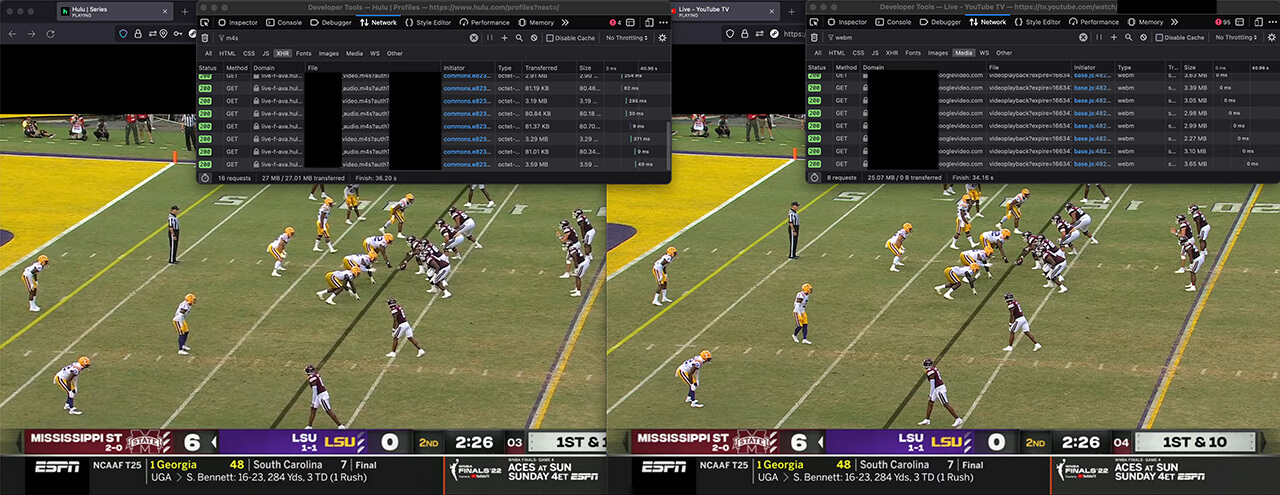

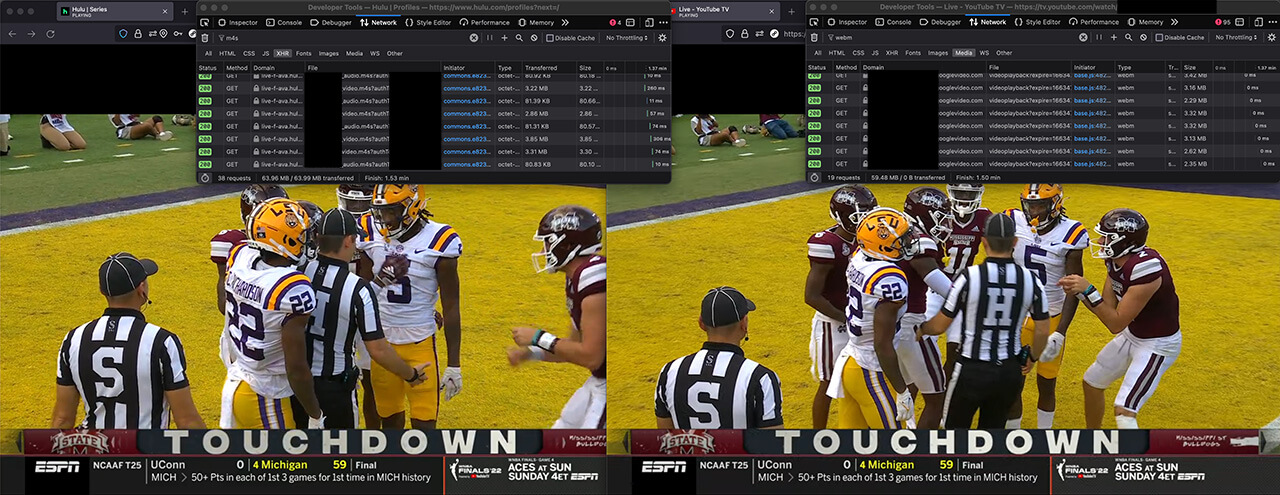

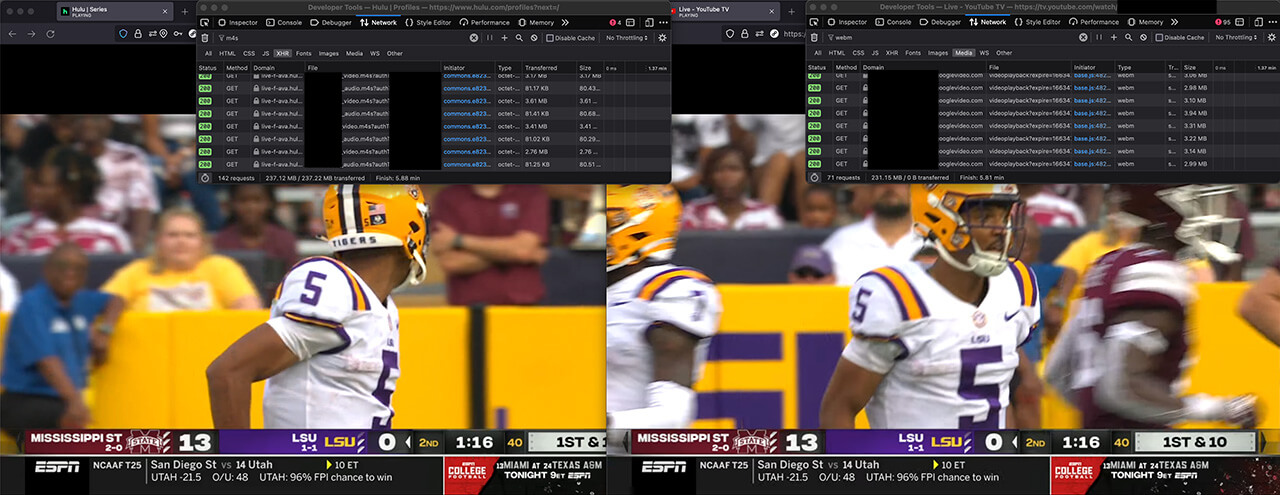
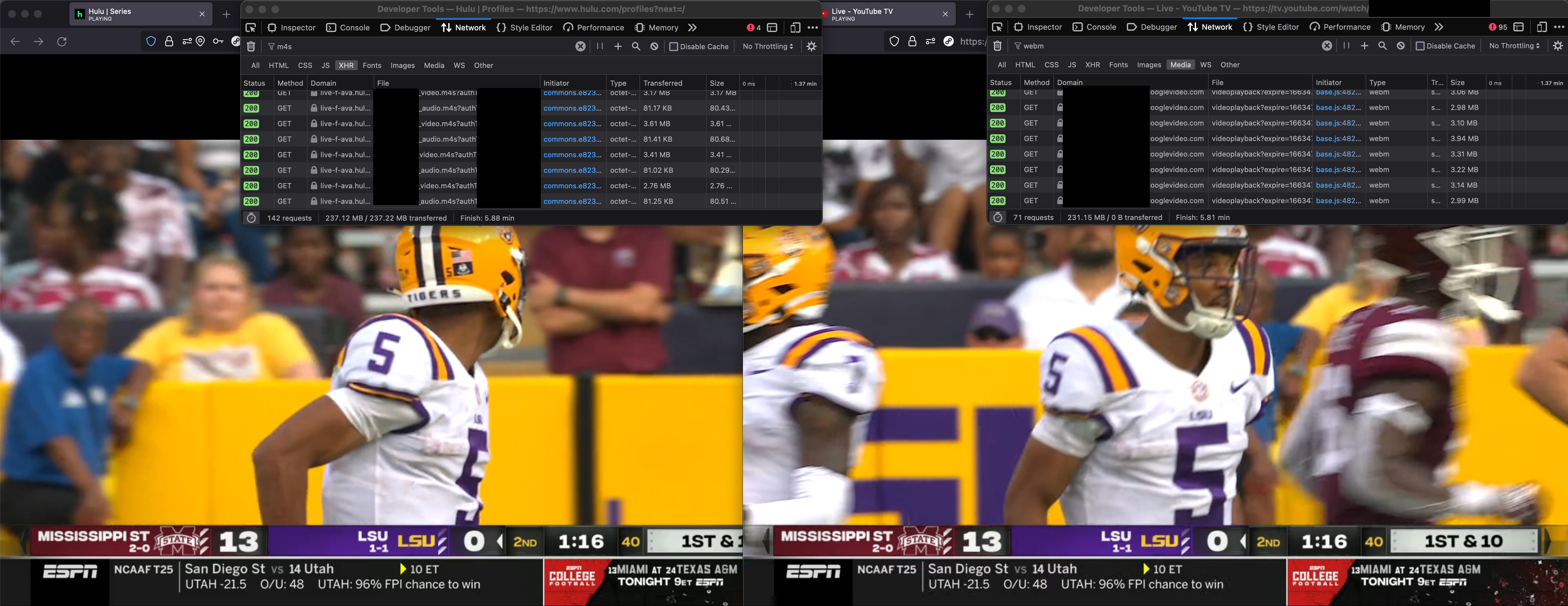
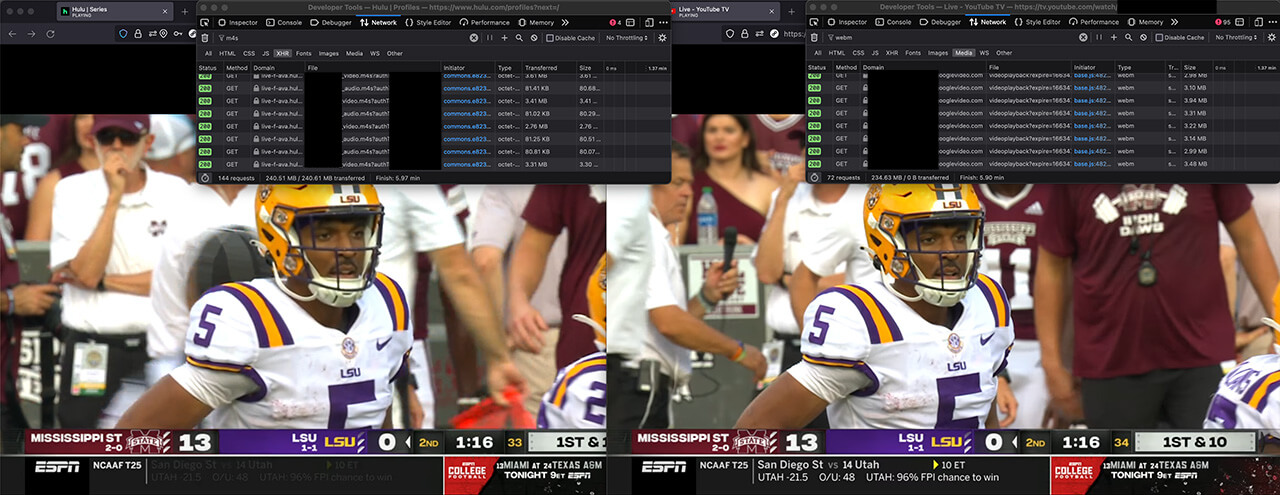
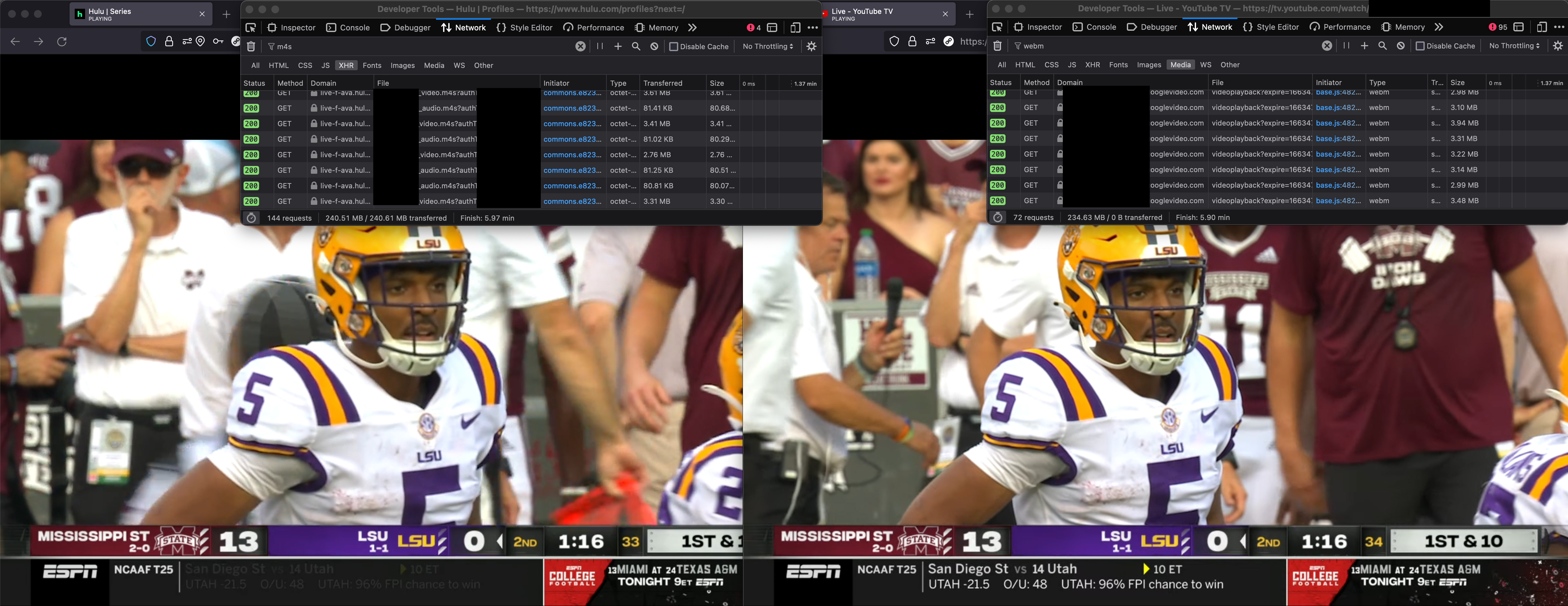
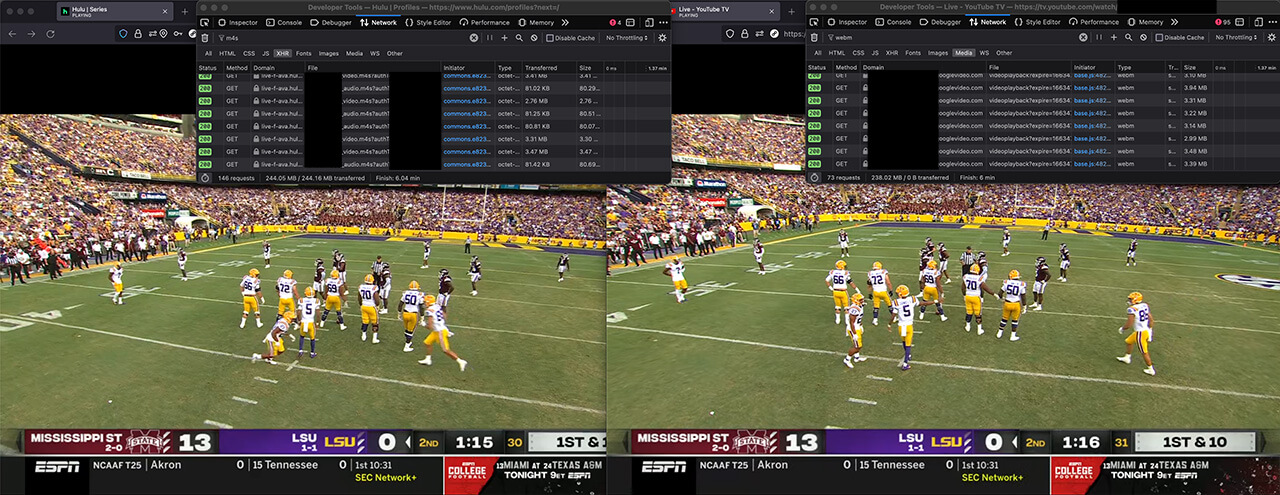
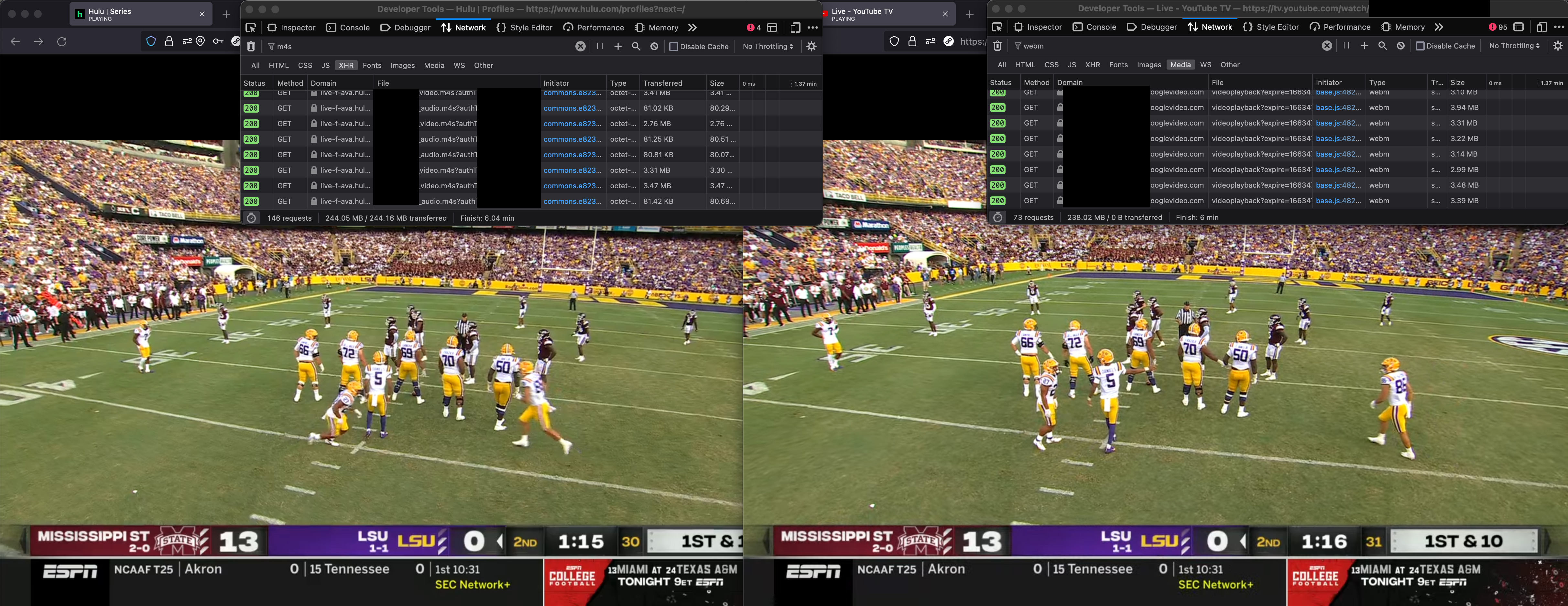
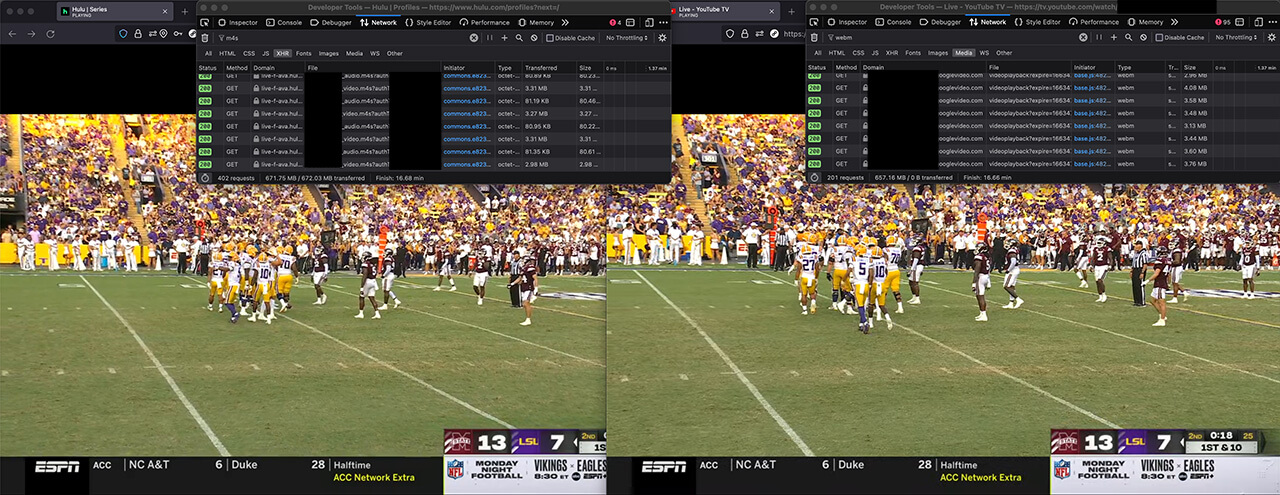
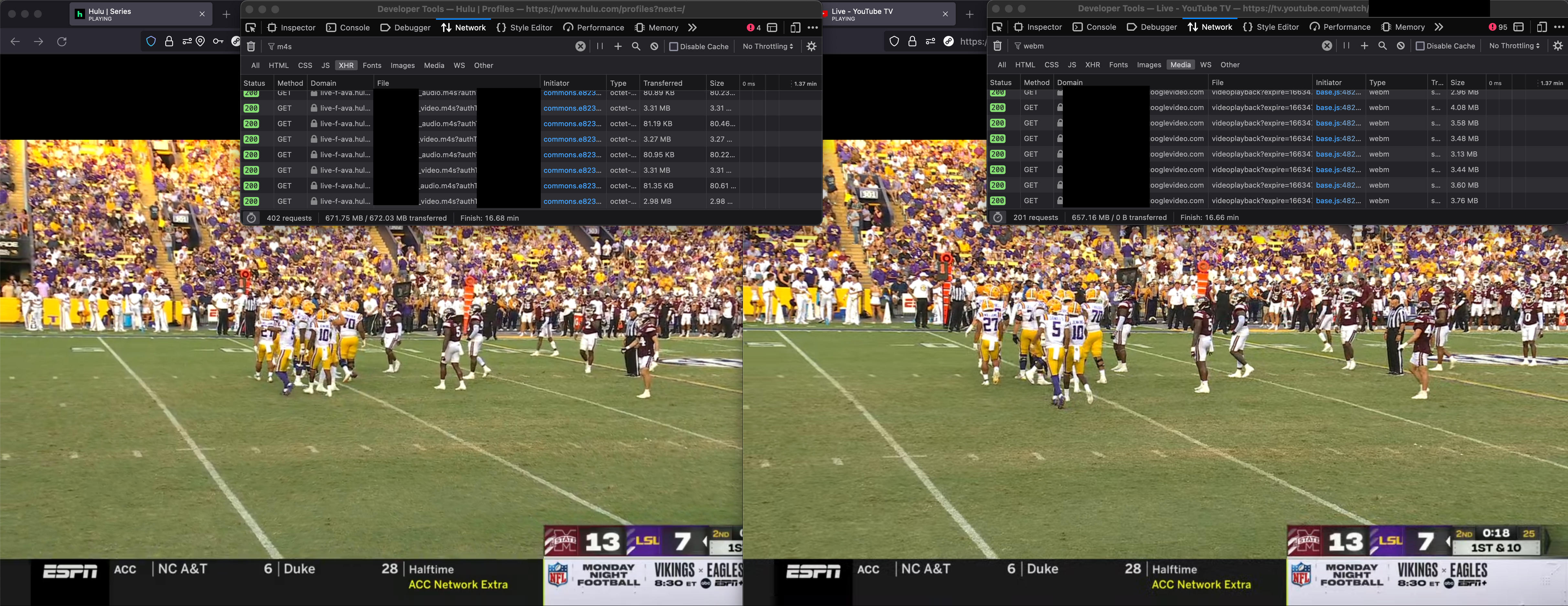
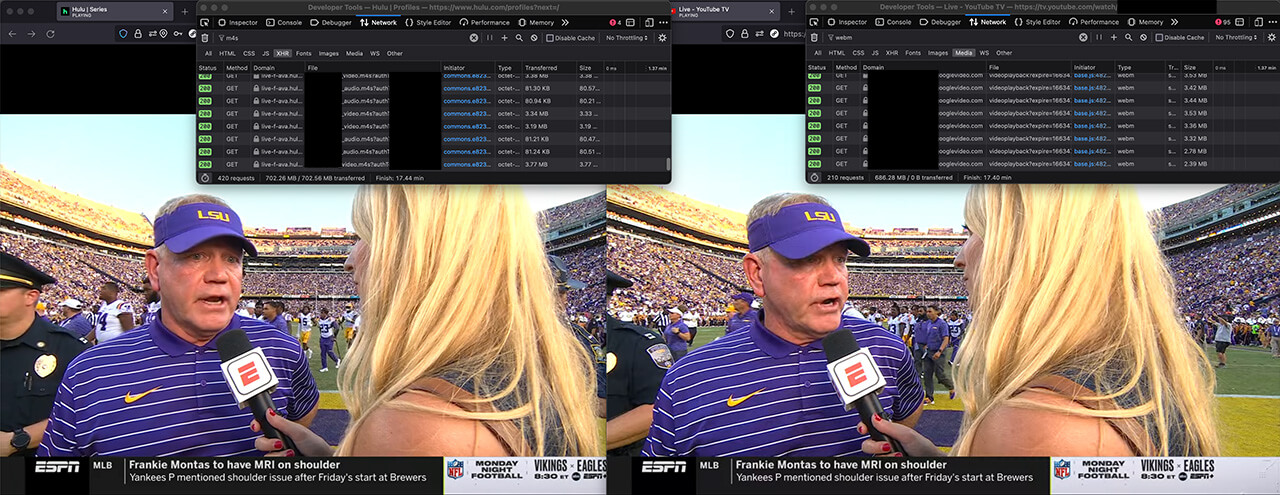
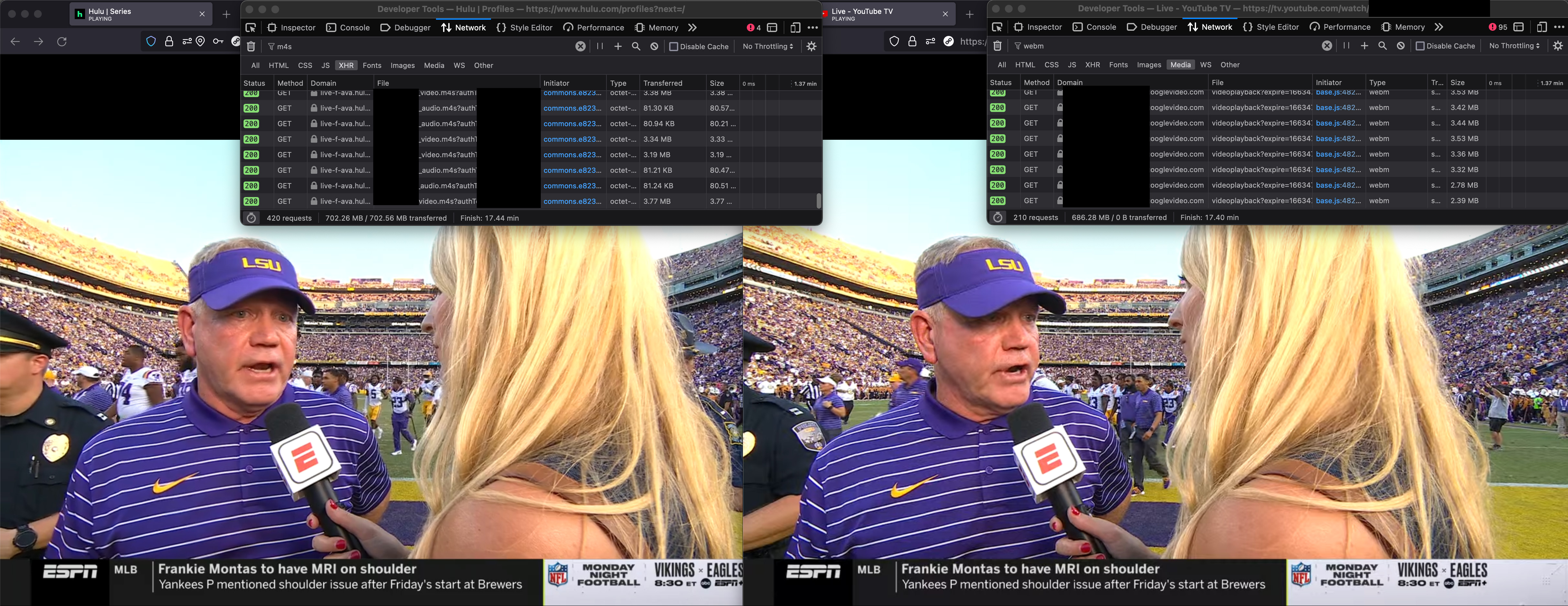
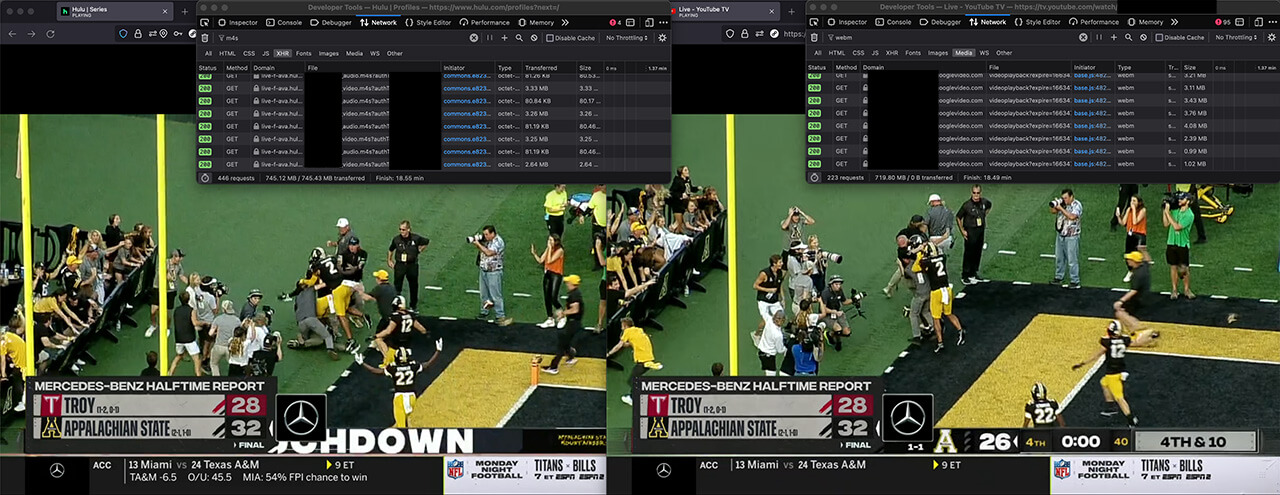
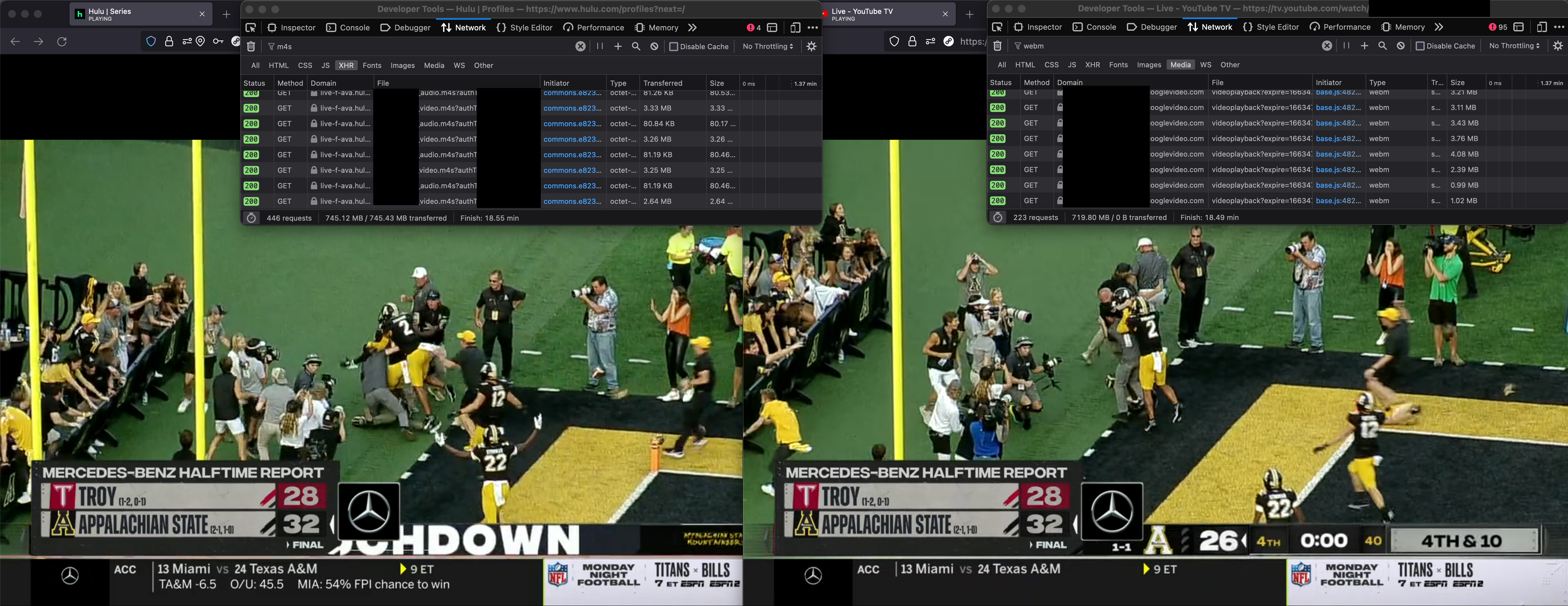
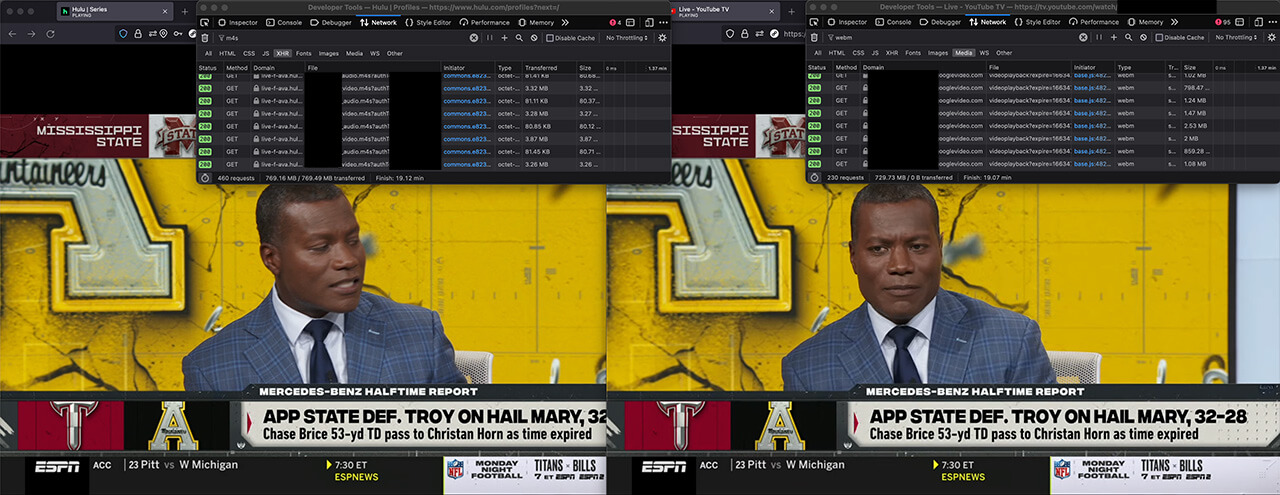
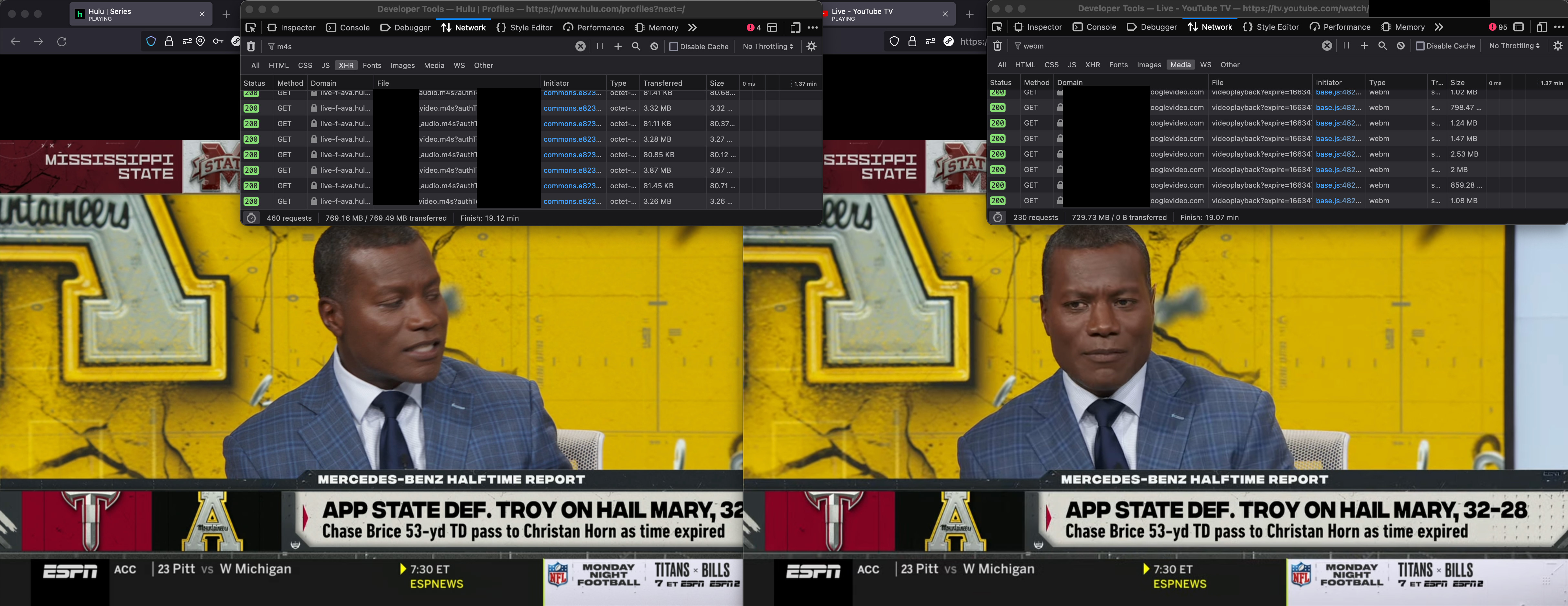
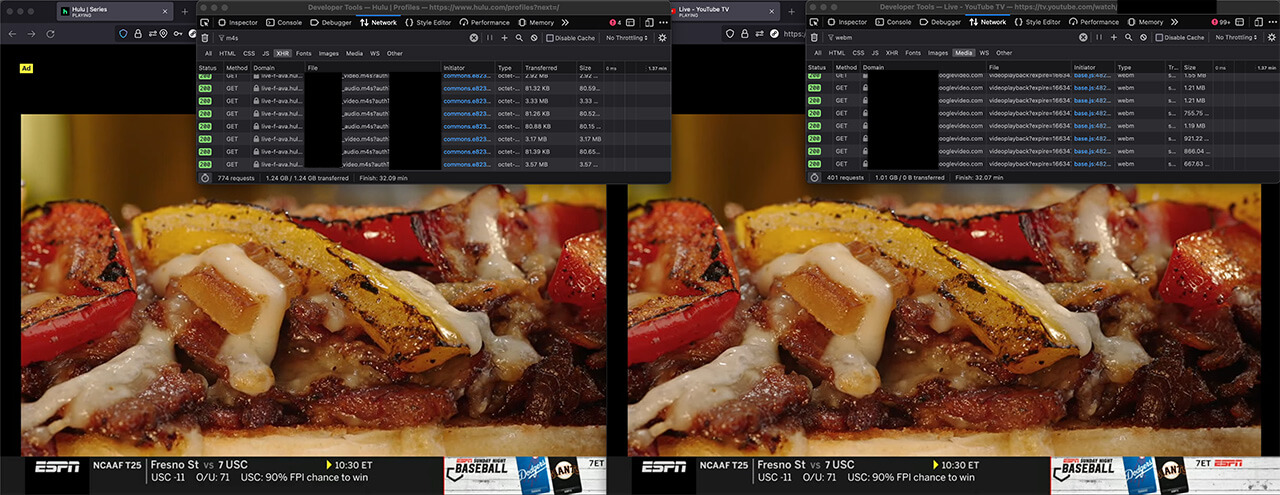
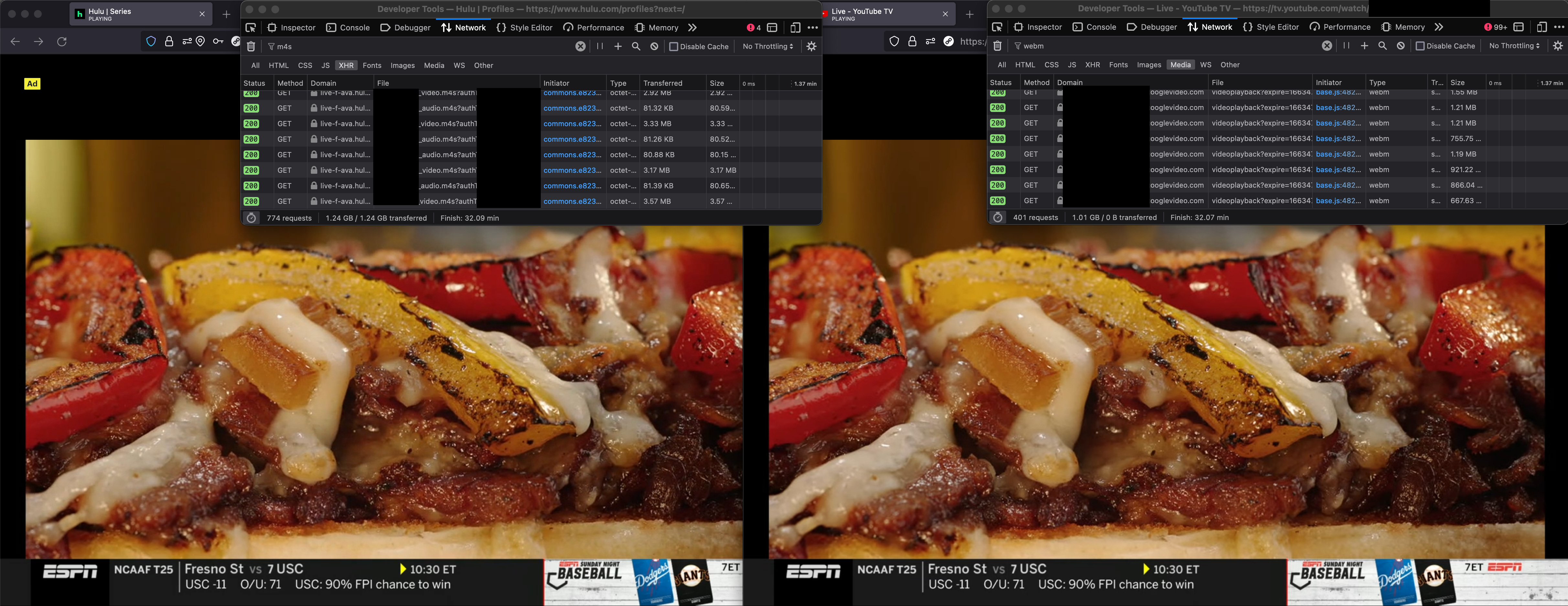
Conclusion
I was unable to find any significant difference in picture quality between these two streams. Not while watching the streams live or by analysing screenshots.
The picture quality provided by both providers is not great. They are essentially retransmitting the same early 2000s MPEG2 content that you can find on cable TV and over-the-air. Macroblocks throughout and loss of detail when the image is zoomed out (see: football field texture).
However, I believe that this difference in bitrate is 100% a non-issue.
This of course assumes that both services are working correctly. There may be small differences in picture quality, perhaps larger ones when local network affiliates get involved. There may be situations where one the providers just doesn't work well at all with a specific ISP or a specific device, but I cannot find any reason to believe that YouTube is intentionally providing a lower quality product.
Thanks for reading.